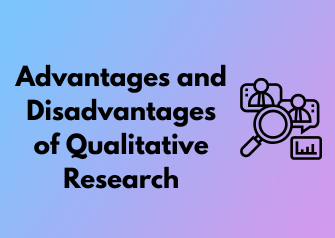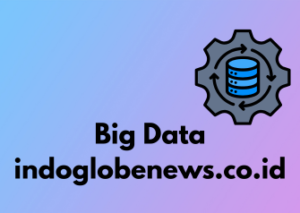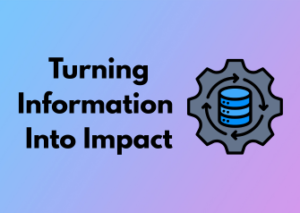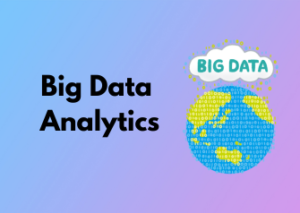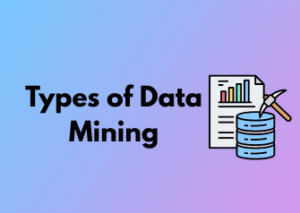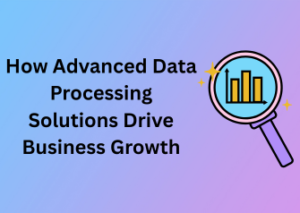When it comes to qualitative market research, there’s something uniquely powerful about tapping into the human side of consumer behavior. Facts and figures are great, but if you’ve ever wondered why we choose one product over another or why a brand resonates more with some people than others, you’ll quickly realize numbers alone don’t tell the full story. That’s where the human side of insights comes into play.
At its core, qualitative research focuses on understanding the emotional, psychological, and social factors that guide decision-making. Let’s face it, as humans, we’re wonderfully complex creatures with a mix of needs, desires, and personal contexts. Quantitative data may tell you what people are doing, but qualitative research takes a closer look at why.
Why Is This So Important?
Think about it this way: let’s say your company launches a new line of eco-friendly sneakers. Sales may be climbing, but without qualitative insights, you might miss key questions like:
- What emotions do customers feel when they purchase the sneakers?
- How does your eco-friendly message align with their personal values?
- What specific features make them fall in love with the shoes, beyond just utility?
Answering these types of questions helps brands connect on a deeper level, which ultimately fosters longer-term loyalty.
Building Authentic Connections
One of the best parts of qualitative market research is its ability to uncover authentic stories. This could come through a heartfelt focus group conversation, a one-on-one interview, or even an ethnographic study where researchers observe consumers in their natural environment. By exploring these personal perspectives, companies can create messaging or products that resonate emotionally with their audience.
For example, simply knowing that your customers “like sustainability” doesn’t offer much insight or competitive advantage. But qualitative methods might reveal that your audience feels guilt about contributing to climate change or pride when choosing sustainable options. As a business, understanding these underlying feelings provides a roadmap to not only acknowledge your customer’s emotions but also to cater your messaging to meet them where they are.
What Makes It Effective?
- Empathy-Driven Insights: One-on-one conversations allow for understanding consumer pain points and priorities on a personal level.
- Storytelling Opportunities: Sharing relatable, real-world anecdotes from consumers strengthens campaigns and brand initiatives.
- Customized Findings: No two customers are alike. Qualitative research respects this uniqueness, uncovering personalized insights that can drive innovation.
Pro Tip: Maximize the Human Connection
Always approach qualitative research with curiosity and open-mindedness. While there’s an art to asking the right questions, a skilled researcher knows that real breakthroughs often come from actively listening to the stories people share. Be sure to focus not only on what customers say but also on the unspoken cues like tone, body language, or emotions that complete the picture.
Flexibility in Real-Time: Adapting During Conversations
When it comes to qualitative market research, one of its standout features is the incredible flexibility it offers. Imagine this: you’re in the middle of a focus group or an in-depth interview, and a participant suddenly brings up an unexpected insight or a unique perspective. You, as the researcher or moderator, can immediately pivot, dive deeper into that thought, and explore uncharted territory. This real-time adaptability is one of the biggest superpowers qualitative research offers—in fact, it’s where some of the most valuable discoveries are made!
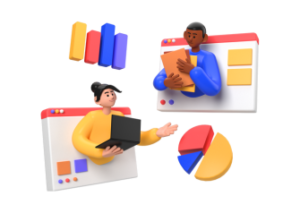
Why is this adaptability so important? Let’s break it down step by step:
The Power of Winging It (In All the Right Ways)
Don’t worry—this isn’t about improvising blindly. It’s about having the space to respond to participants’ cues and tailor your approach in the moment. Unlike quantitative research, which relies on rigid questionnaires and standardization, qualitative methods thrive on being dynamic. If a respondent shares a creative idea or raises a new question, you can run with it! Your study doesn’t have to be locked into a set path. That’s huge for uncovering insights that might not have been on your radar to begin with.
Think of it like a conversation with a good friend. Your initial goal might be to ask about their day, but if they share some unexpected news, you’re naturally going to follow that thread. The same applies to qualitative research—some of the best insights arise when you’re not afraid to stray slightly from the script.
Staying Relevant and Relatable
This capacity for real-time adaptation allows researchers to stay in sync with participants in a natural and comfortable way. Every participant comes from a unique background, has their own preferences, and might react differently to questions. Being flexible lets moderators adjust their tone, phrasing, or even the structure of the session to connect more effectively with each person.
For instance, if you’re conducting interviews about a new product and someone hints at cultural factors influencing their opinion, you can shift gears. By catering follow-up questions to what resonates with them, you create an environment that feels both personalized and respectful. Authenticity? Check. Meaningful answers? Double check.
Real-Time Flexibility Less Missed Opportunities
One of the underlying benefits of this flexibility is plain and simple: nothing slips through the cracks. In a structured survey, once participants check their boxes, there’s no asking “why” or digging deeper. But with qualitative research, you can seize the opportunity to clarify confusion, unravel interesting contradictions, or pursue “lightbulb” ideas as they arise.
- If someone hesitates to answer, you can ask open-ended questions to uncover what’s holding them back.
- If participants explore surprising topics, you can thrive on that detour and gather more elaborate feedback.
- If something unexpected aligns with broader research objectives, you can connect the dots then and there rather than realizing it post-analysis.
Striking the Balance Between Structure and Fluidity
Of course, it’s important for flexibility to work within a framework. Balancing the planned structure with the ability to adapt enables researchers to gain the insights they set out to find—while still leaving room for surprises. This ensures your research process remains focused without losing its creative edge.
The Power of Depth Over Numbers
When it comes to market research, it’s easy to get caught up in the numbers. After all, big data and sweeping statistics paint a bird’s-eye view of your customers. But let’s be honest—people aren’t spreadsheets or pie charts. This is where qualitative market research really shines. It’s not about casting a wide net; it’s about diving deep and uncovering the meaningful, nuanced stories behind customer behavior.
So, why is depth so valuable? Well, it’s because real insights often live in the details. Numbers can tell you what’s happening, like how many people bought a product—but they rarely shed light on why they chose it. Qualitative research uncovers that why, digging into the motivations, emotions, and beliefs that drive consumer decisions. Think of it as zooming in with a magnifying glass instead of looking at a broad, blurry picture.
Connecting with Consumers at a Human Level
Imagine sitting down with a customer for a one-on-one conversation. You’re not bombarding them with a multiple-choice questionnaire; you’re having a genuine, open-ended discussion. That’s the heart of qualitative research. These in-depth interactions allow you to tap into personal experiences, preferences, and challenges that wouldn’t surface in a general survey.
For example: A survey might reveal that customers value sustainability in a brand, but an in-depth interview could uncover that they’re willing to pay more for products with eco-friendly packaging because they feel guilty about their consumption habits. This kind of rich insight can reshape your marketing strategies and product development decisions.
Bringing Context to the Table
A major advantage of qualitative research is its ability to provide context. Customers are complex, and their choices don’t happen in a vacuum. With in-depth methods such as focus groups or ethnography (observing consumers in their natural environments), you can explore the cultural, societal, and emotional factors that influence how they interact with your brand.
- Focus groups: Facilitate exploratory discussions where customers bounce ideas off each other, revealing diverse perspectives.
- Ethnography: Offers a window into real-world customer behaviors, especially in their natural setting (think testing a product at home).
Armed with this contextual understanding, your business can craft marketing messages, product designs, or services that feel more personalized and resonate with your target audience.
Telling a Story, Not Just a Stat
Let’s face it—stories are memorable, while numbers, unless mind-blowingly impressive, often fade into the background. One of the hallmarks of qualitative research is its ability to extract meaningful narratives. These accounts not only help businesses connect with their audience but also serve as powerful tools when pitching ideas internally.
Consider this: Instead of reporting that “65% of our customers prefer organic ingredients,” you can share the story of Emma, a young mother who buys organic skincare products because she wants to model sustainable choices for her kids. See the difference? Stories create emotional resonance, making your findings much more impactful.
The Depth vs. Breadth Debate
Of course, not everyone is immediately sold on prioritizing depth over numbers. You might be wondering: Can’t we just stick to large-scale surveys and call it a day? Well, here’s the thing: While numbers are excellent for validation, they often don’t give you the insights to innovate. Deep, qualitative exploration is what enables you to identify and address unmet needs in your market.
To make it sing, qualitative research often works best alongside quantitative methods. Think of it like this: Numbers give you the skeleton, and qualitative insights add the muscle, skin, and personality that bring the structure to life.
Subjectivity: A Double-Edged Sword
When it comes to qualitative market research, subjectivity is both its charm and its challenge. Why? Because subjective insights are what make qualitative research feel so human and relatable, but they can also make things a little messy and unpredictable. Let’s take a closer look at how subjectivity plays this double-edged role in building—and potentially complicating—valuable consumer insights.
Why Subjectivity is a Positive Force
First, let’s talk about the light side of subjectivity. The very nature of qualitative research is that it dives into human perspectives, experiences, and emotions. And—you guessed it—these are inherently subjective! In fact, this is what makes qualitative research feel alive and dynamic. Here are some benefits of embracing subjectivity:
- Rich, Emotional Insights: Subjective feedback allows researchers to uncover how people feel about brands, products, or services. Instead of just knowing that 80% of people prefer Product A over Product B (quantitative data), subjectivity helps you understand the why behind it. For example, maybe Product A resonates because it feels “trustworthy” or “approachable.” That emotional layer is invaluable.
- Empathy-Driven Creativity: Subjectivity often inspires innovative ideas. When you’re able to hear raw, personal anecdotes, you’re more likely to connect with your target audience in new, unexpected ways. Brands that listen to these personal stories often succeed in building relationships that resonate deeply.
- Driving Strategy: While quantitative research provides a solid foundation, subjectivity adds context and color, giving decision-makers a clearer picture of what consumers truly want and need.
The Risks and Challenges
Of course, not everything about subjectivity is a win. It’s called a double-edged sword for a reason, and here are some of the common pitfalls researchers should watch out for:
- Biased Interpretations: Subjective data is shaped by personal perspectives, which means it can be open to misinterpretation. A researcher might unconsciously filter participants’ responses through their own biases, leading to conclusions that aren’t fully accurate.
- Too Many Variables: People are complex, so subjective input can vary wildly from person to person. This makes it difficult to draw clear, actionable insights if the research lacks focus or structure. For example, one participant might focus heavily on aesthetics, while another talks only about functionality, leaving you with competing priorities.
- Overemphasis on Outliers: In qualitative studies, a particularly passionate or unique respondent might draw undue weight in analysis. While these outlier voices can be fascinating, they risk overshadowing the broader patterns the majority of participants reveal.
How to Balance the Subjectivity Scale
The trick to managing subjectivity lies in finding the balance. Here are a few tips to help researchers harness its benefits while mitigating its risks:
- Combine Approaches: Pair qualitative insights with quantitative data to create a more holistic picture. Where subjectivity presents questions, hard numbers can help confirm or prioritize your findings.
- Train Moderators and Analysts: Researchers need to be self-aware and skilled at identifying their own biases, so they can focus on what participants are saying—not what they think participants should be saying.
- Look for Patterns: Instead of weighing every opinion equally, focus on recurring themes and consistent feedback. These patterns often point to insights worth acting on.
Time and Cost Challenges in Personalized Insights
When diving into the world of qualitative market research, one of the most significant aspects to consider is the time and cost associated with gathering personalized insights. While its ability to delve deep into consumer behaviors and motivations is undeniably valuable, this process can put noticeable pressure on both budgets and timelines. Let’s explore some of these challenges and how they can impact businesses aiming to gain actionable insights.
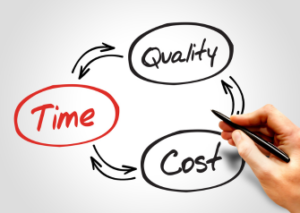
The Intricacy of Personalization
At its core, qualitative research is all about customization. You’re tailoring your conversations with respondents to uncover those gold nuggets of information that can drive better decision-making. However, this personalized nature comes with a price — both figuratively and literally. Designing targeted interviews, focus groups, or ethnographies requires thoughtful planning, skilled professionals, and often specialized tools or environments. This level of attention ensures a rich understanding of consumer perspectives, but it also extends project timelines significantly.
Time-Consuming Processes
Unlike quantitative research, which can often rely on automated tools to gather and analyze large volumes of data quickly, qualitative research involves a slower, human-driven approach. Scheduling interviews, conducting in-depth conversations, and then analyzing qualitative data can take weeks or even months, especially if you’re working with a cross-section of diverse participants.
Let’s not forget about the transcriptions! Turning raw recordings into meaningful text is no small feat. And yes, while technology like AI has begun to assist in this area, the more nuanced interpretations of tone, pauses, and context still rely heavily on human expertise. While the results are richly rewarding and uniquely insightful, this is no fast-and-easy endeavor.
Cost Intensiveness
Alongside the time challenges, the cost factor in qualitative research can be another sticking point. Unlike simpler survey tools, qualitative research often demands expert moderators, trained observers, and specific research facilities to get the job done right. Factor in participant incentives, travel expenses, and hours spent on analysis, and the budget can quickly spiral upwards.
Additionally, it’s worth noting that personal interaction often limits the number of participants you can meaningfully engage — unlike quantitative research, where thousands can weigh in through a simple online survey. This small sample size ensures depth but doesn’t come cheap, as quality always trumps quantity in this field.
Striking a Balance: Tips to Navigate These Challenges
Now, before you start thinking qualitative research is only for those with a limitless budget and boundless patience, there are ways to navigate these obstacles smartly. Here are some quick tips:
- Set Clear Objectives: Be razor-sharp about what you want to learn. Focusing your efforts helps save both time and money while ensuring more precise outcomes.
- Leverage Technology: Use online tools and platforms for virtual interviews or focus groups, which can be more cost- and time-efficient than in-person setups.
- Focus on a Skilled Team: Working with experienced professionals ensures that time isn’t wasted on trial-and-error approaches. A strong team also ensures the quality of insights matches your investment.
- Small Steps, Big Impact: Conducting smaller, well-targeted research efforts before scaling up can help gauge early insights without overcommitting resources.
- Blend Methodologies: Consider integrating qualitative research with other methods (like quantitative analysis) to supplement insights while managing timelines and budgets.
Digging Deeper: When Cultural Nuances Matter
Understanding cultural nuances is like peeling an onion—layer by layer, you uncover insights that can shape the success of your market research. In the world of qualitative market research, overlooking cultural subtleties can lead to misguided strategies, while recognizing them can be the key to breakthrough ideas. Let’s explore why cultural nuances matter and how they help researchers dig deeper into consumer behavior and preferences.
The Role of Culture in Shaping Perceptions
Culture influences how people think, feel, and behave. It’s a silent force that dictates how consumers interpret your brand, marketing messages, or even the products themselves. For example, in some cultures, gift-giving is a deeply meaningful tradition, which might make packaging and presentation paramount. In others, practicality might outweigh aesthetics entirely. Good qualitative research takes these layers into account.
Let’s not forget language, either! Words don’t just convey meaning, they convey culture. A gesture or phrase that works brilliantly in one region might fall flat, or worse, offend, somewhere else. Knowing these nuances is crucial for crafting campaigns or strategies that truly resonate.
Why Cultural Competency Is an Asset
When you’re gathering insights, being culturally informed is essential to fully understanding consumer sentiment. Think about focus groups: Participants from different cultural backgrounds often respond differently to questions. A researcher with cultural competency knows how to read between the lines and interpret these reactions accurately.
Culturally informed market research allows you to tailor your approach to the audience you’re studying, making them feel understood. This not only leads to more honest and in-depth responses but also positions your brand better when it’s time to launch a product or campaign.
How to Unearth Cultural Nuances in Research
So, how can you ensure you’re addressing cultural nuances? Here are a few strategies that can help:
- Hire diverse teams: Researchers with different cultural backgrounds bring unique perspectives—and they’re often more likely to identify gaps that others might miss.
- Leverage local expertise: Collaborate with moderators or experts who understand the intricacies of the culture you’re studying. They’re invaluable for interpreting subtle cues or reactions.
- Customize your methods: A one-size-fits-all approach rarely works. Adapt your language, questions, and even the setting of your research to suit the cultural context.
Pitfalls to Avoid
Even with the best intentions, there are missteps researchers can easily make when grappling with cultural nuances:
- Oversimplification: Cultures are complex, and generalizing can lead to blind spots. Not every trend or behavior in a region applies across the board.
- Stereotyping: Avoid interpreting cultural patterns through stereotypes. Doing so can result in skewed insights that harm the authenticity of your results.
- Neglecting regional variations: Remember, cultural nuances often vary significantly even within a single country. A metropolitan mindset often differs from a rural one, for instance.
Expert Moderation: Its Role in Shaping Perspectives
Let’s dive into the fascinating world of expert moderation and explore why it’s such a crucial cog in the wheel of qualitative market research. Picture this: a talented moderator leading a focus group discussion, teasing out delicate insights from participants without ever dominating the conversation. Sounds impressive, right? That’s because expert moderation is both an art and a science!
Why Expert Moderation Matters
At its core, expert moderation ensures that the research process unfolds seamlessly. A skilled moderator does much more than just ask questions; they create a safe and welcoming environment where participants feel comfortable sharing their true thoughts and feelings.
Here’s why this is crucial: in qualitative market research, the insights you gather often depend on the honesty and openness of your participants. A moderator who knows how to ask the right questions at the right time—while remaining neutral and empathetic—can dig up deeply valuable perspectives that might otherwise stay hidden.
Key Skills of a Great Moderator
So, what makes a moderator truly excellent? It boils down to a well-rounded set of skills that blend expertise, communication, and emotional intelligence. Here’s what they bring to the table:
- Empathy: Understanding what participants are feeling and responding appropriately is vital in fostering trust and comfort.
- Adaptability: Every conversation is unique, and participants can veer off track. A great moderator knows how to gently steer things back without stifling creativity.
- Active Listening: Passionate listening is key to catching subtle cues—whether it’s an offhand comment or a slight change in tone—that could lead to breakthrough insights.
- Unbiased Approach: Remaining neutral ensures the participants’ voice is front and center, not the moderator’s personal opinions.
Shaping Perspectives Without Directing Them
Moderators have this almost magical ability to shape the direction of a discussion without ever influencing it. Confused? Let’s break it down! An expert doesn’t interject with their own ideas but instead uses probing questions to encourage participants to elaborate. For instance, they might steer the group by asking, “Can you tell me more about why you feel that way?” or “How might this product fit into your daily life?” These open-ended questions coax participants to dig deeper into their thoughts.
When these discussions unfold naturally—led by the participants but steered subtly by the moderator—the insights become authentic and unfiltered. That’s how you strike gold in qualitative research!
The Risk of Inexperience
On the flip side, inexperienced moderation can lead to skewed results. Imagine a moderator who unconsciously leads participants toward a particular answer or focuses too much on one person’s opinion. This creates bias, rendering the research less reliable. That’s why trained professionals with years of experience are so critical: they know how to avoid these pitfalls and ensure the findings are objective and balanced.
Conclusion: Experts Drive True Insight
No matter how advanced the research techniques are, it’s the people behind the process who make the biggest difference. An expert moderator brings together a kaleidoscope of voices, ensuring everyone is heard, valued, and understood. They don’t just collect data—they curate an experience that inspires participants to open up, creating a treasure trove of meaningful insights.
So, the next time you’re digging into qualitative research, remember: a skilled moderator isn’t just a guide; they’re the secret sauce behind the scenes.

